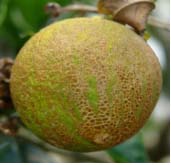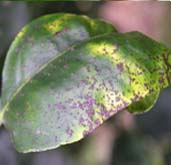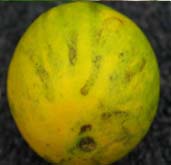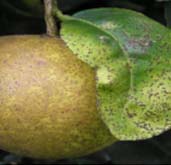What is citrus melanose?
It is a fungus which can infect any type of citrus tree, but grapefruit and lemon are most susceptible to it. The fungus grows on dead twigs on trees, and it then spreads to other areas of the tree and other trees by water dispersal.
Susceptibility- They are mostly susceptible to sweet orange, grapefruit, and pummelo.
Causal organism– Diaporthe citri
Symptoms-
- The leaves are characterized by small, darkly colored, slightly raised, corky pustules. The spots are surrounded by yellow halo.
- In fruits small, slightly raised, rough, reddish brown to black pustules develop on the peel or skin which are randomly distributed and exhibit a “Tear Stain” pattern.
 |  |  |  |
Fig – Symptoms of Melanose in Citrus spp. fruits and leaves
Source – CTAHR, University of Hawaii
Mode of spread-
- Rain and overhead irrigation act as short distance dispersal.
- Wind act as a long-distance dispersal.
- The dead and decay portion of plant act as a host which should be remove and disposed properly.
Reason of severity
- The continuous moisture on leaf or fruit surfaces for a period of 8- 24 hrs will enhance the infection to occur.
Management-
| Cultural Practices | Chemical Control |
| The diseased leaves, twigs, fruits should be collected and destroyed. | Spray Copper oxychloride or Carbendazim 50% WP @ 2 gm per liter.Spray Mancozeb75% WP @ 2 gm per liter of water. |
Source –
Book – Handbook of Horticulture








